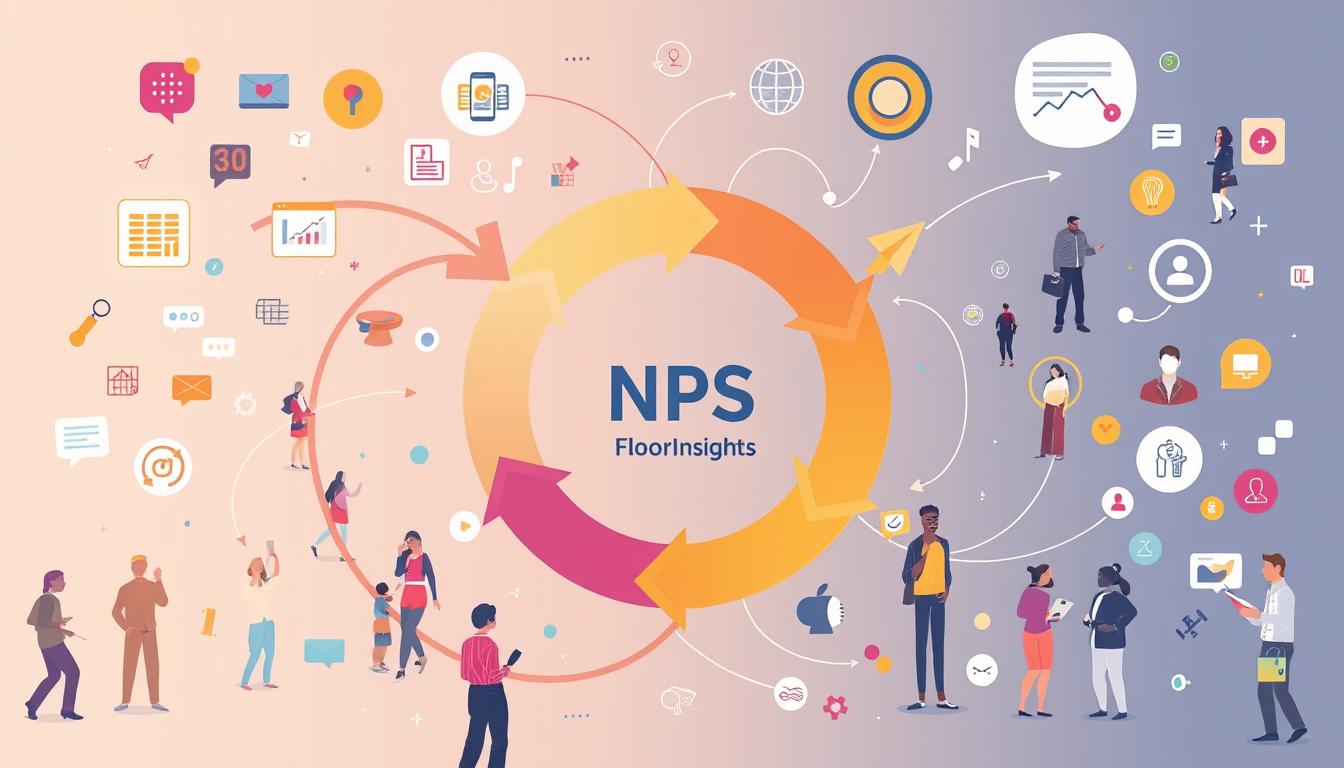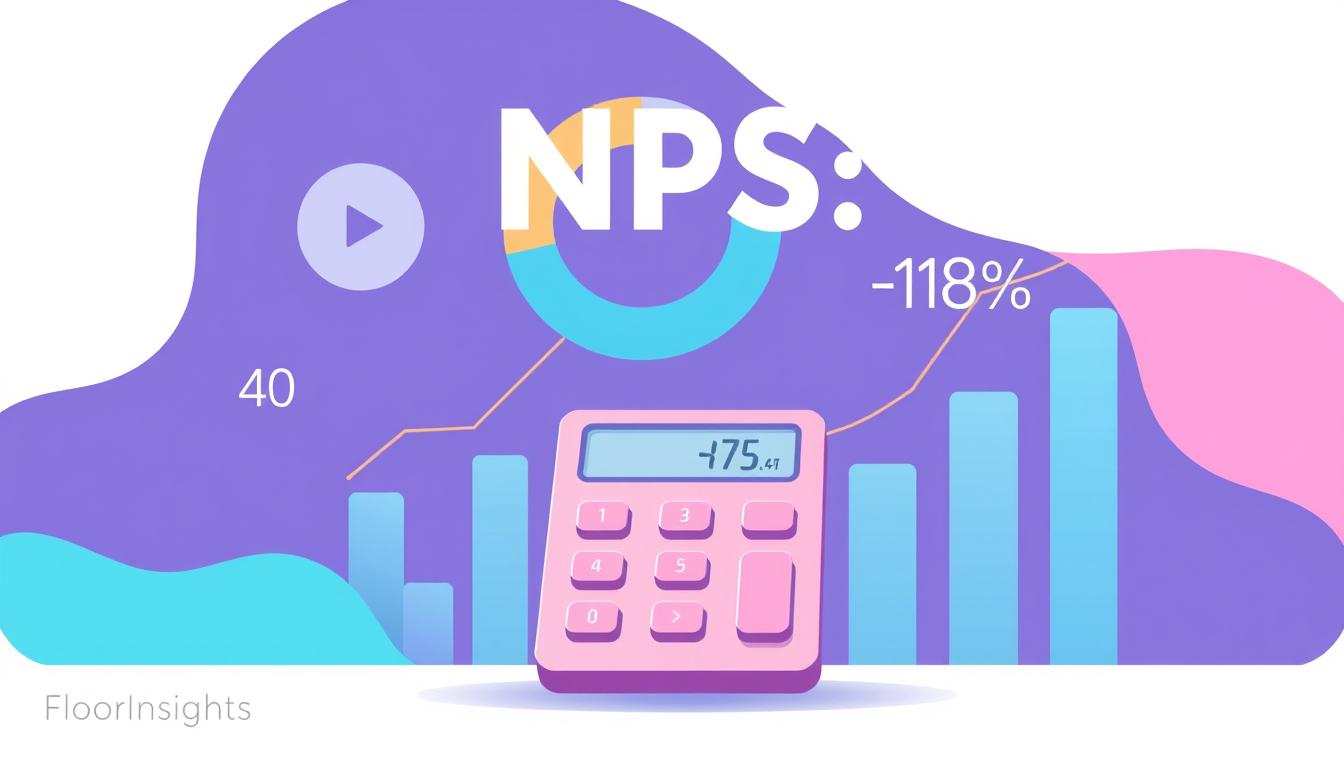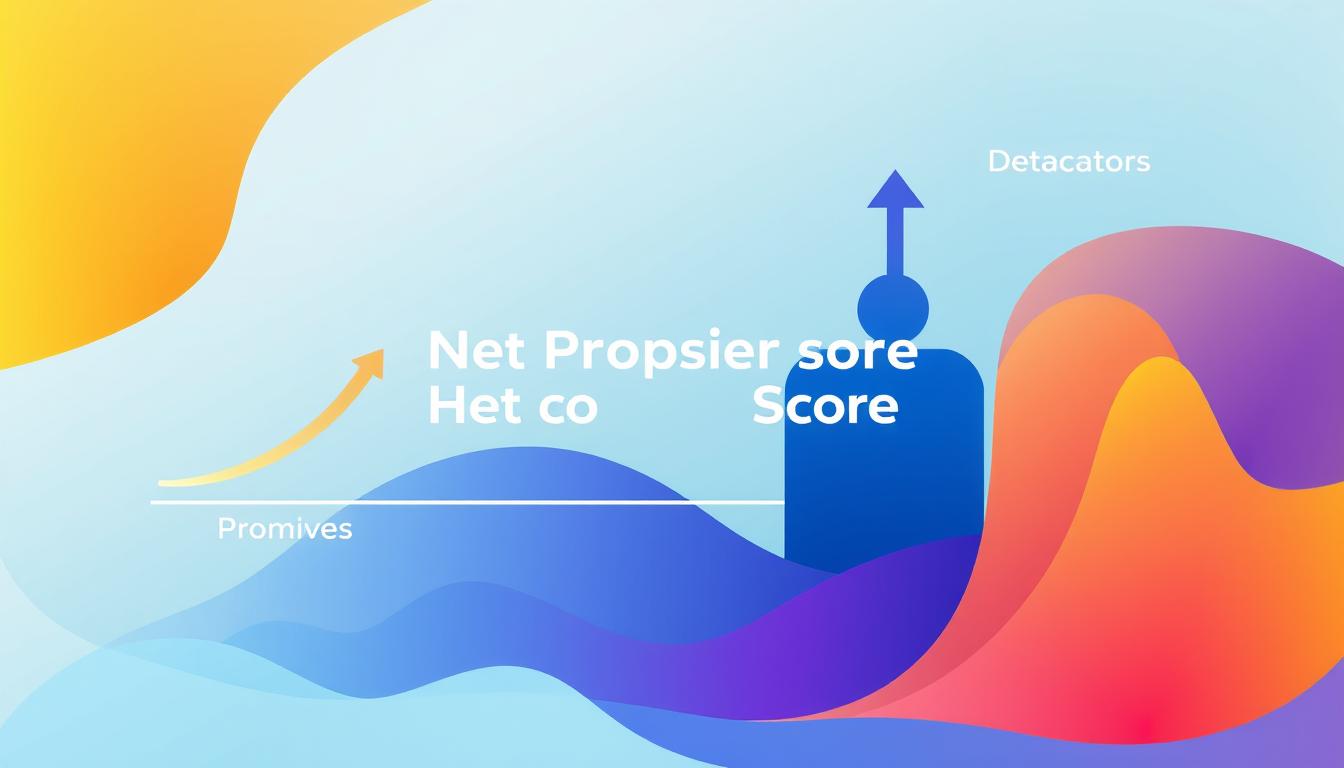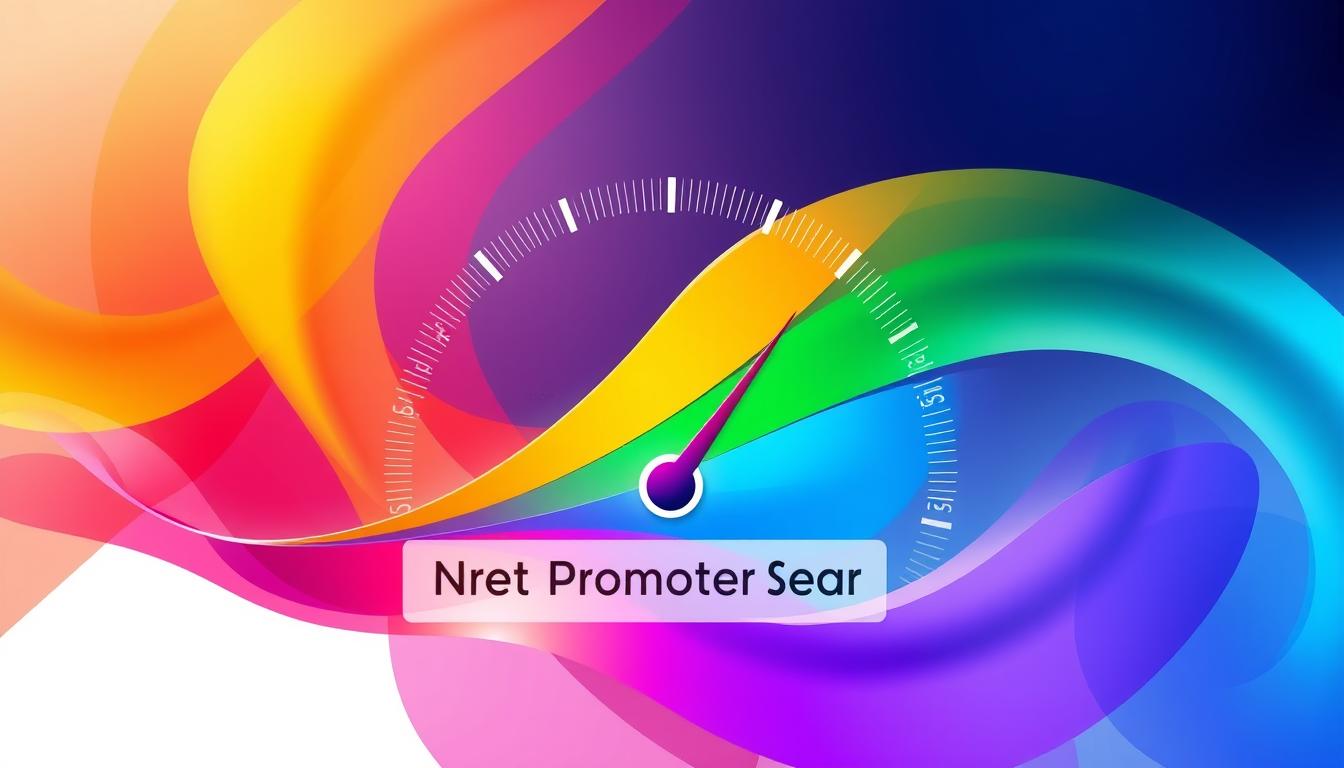In today’s competitive landscape, understanding our customers is vital for success. We can harness the power of closed-loop feedback systems utilizing Net Promoter Score (NPS) to gain profound insights into customer sentiment. By establishing robust customer feedback loops, we create an environment where customer voices are heard and valued, thereby enhancing loyalty and overall experience. Through this section, we will explore how NPS empowers us with actionable customer insights, essential for developing tailored strategies, particularly in the vibrant Indian market.
Key Takeaways
- Closed-loop feedback systems are essential for understanding customer sentiment.
- Net Promoter Score is a powerful metric for gauging customer loyalty.
- Establishing customer feedback loops enhances overall customer experience.
- Actionable insights from NPS inform tailored business strategies.
- Fostering customer insights is crucial in the Indian market.
Understanding Closed-Loop Feedback Systems
Closed-loop feedback systems represent a vital strategy for organizations aiming to enhance their services and products based on direct customer insights. These systems allow us to collect customer feedback consistently, analyze the data, and engage in feedback implementation to drive process improvement.
Timely responses to customer feedback are essential. By not only acknowledging but actively addressing the concerns and suggestions of our customers, we create a culture rooted in customer engagement. This approach fosters stronger relationships and makes customers feel valued, which can lead to increased loyalty toward our brand.
The benefits of adopting closed-loop feedback systems extend across various industries. Implementing such systems enhances our ability to respond to customer needs promptly, showcasing our commitment to improvement. Continuous feedback allows us to adapt quickly to changing market demands, ensuring our strategies remain relevant and effective.
As we engage in this holistic approach, the impact becomes evident in both customer satisfaction and business performance. Organizations that prioritize these systems often see substantial improvements in service delivery and product development, reinforcing the importance of closed-loop feedback systems in today’s competitive landscape.
The Importance of Customer Feedback Loops
Customer feedback loops play a critical role in how we understand and respond to customer needs and expectations. Engaging in meaningful dialogues with our customers allows us to recognize the value of customer input, effectively shaping our products and services. By systematically gathering insights, we can refine our offerings to align more closely with what our customers truly desire.
Integrating customer input into our business strategies enhances customer experience, ensuring that we make informed choices that resonate with our audience. Feedback is not merely data; it is a pathway to stronger relationships and loyalty. The insights gained from feedback can guide our customer retention strategies, fostering a deeper connection with our customer base.
To maximize the potential of customer feedback loops, we can adopt various methods for gathering insights, including:
- Surveys and questionnaires
- Social media interactions
- Review and testimonial analysis
- Candid conversations during support interactions
Effective feedback loops cultivate ongoing communication with our customers. This continuous dialogue fuels a greater understanding of how we can enhance customer experience. By actively creating opportunities for our audience to share their thoughts, we demonstrate that their opinions matter, leading to greater loyalty and trust.
| Feedback Method | Benefits | Challenges |
|---|---|---|
| Surveys | Quantifiable data collection | Response bias |
| Social Media | Widespread reach and immediacy | Negative feedback visibility |
| Reviews | Public credibility and insights | Difficulty managing perception |
| Support Interactions | Direct customer engagement | Limited to immediate context |
Our commitment to refining customer feedback loops will ultimately lead to sustained business success, enabling us to adapt and innovate in ever-changing markets.
Net Promoter Score: A Key Metric
The Net Promoter Score serves as a vital tool in understanding customer sentiments. Its significance in customer loyalty measurement cannot be overstated. By evaluating this metric, businesses gain actionable insights into consumer perspectives, fostering improved business strategies.
What is Net Promoter Score?
We define the Net Promoter Score as a metric that categorizes customers into three distinct groups: promoters, passives, and detractors. This classification aids in identifying customer loyalty and satisfaction levels. Promoters are loyal enthusiasts likely to repurchase and refer others, while detractors may impede growth by sharing negative experiences. This NPS significance extends beyond simply measuring satisfaction, as it can reflect overall business health and future growth potential.
How NPS is Calculated
The NPS calculation hinges on a single question often posed to customers: “On a scale from 0 to 10, how likely are you to recommend our product/service to a friend or colleague?” Based on their responses, customers are classified accordingly:
| Score Range | Customer Type | Feedback Influence |
|---|---|---|
| 9-10 | Promoters | Highly likely to recommend, contributes to growth |
| 7-8 | Passives | Neutral; may be drawn to competitors |
| 0-6 | Detractors | Unlikely to repurchase; can damage brand reputation |
To derive the final Net Promoter Score, we subtract the percentage of detractors from the percentage of promoters. This scoring system provides a succinct overview of the overall customer sentiment toward the brand.
Interpreting NPS data varies across industries. Businesses must adapt their feedback analysis approaches according to customer interactions and specific business models. The nuances of customer loyalty measurement through NPS promote deeper understanding and encourage ongoing dialogue between businesses and consumers.
Implementing NPS in Your Business Strategy
Integrating NPS into our business strategy requires careful planning and execution. We need to focus on several vital steps that will enhance the effectiveness of our NPS implementation strategy. Establishing clear objectives helps us understand the purpose of collecting feedback. Identifying the target audience ensures that we gather insights from the right customers, while choosing the appropriate survey distribution method maximizes response rates. Analyzing the results effectively informs our decision-making process, leading to improved customer satisfaction and loyalty.
Steps to Integrate NPS Effectively
When considering the integration of NPS, we can follow these structured steps:
- Define Objectives: Clarify what we aim to achieve with our NPS survey, such as increasing customer retention or enhancing product quality.
- Identify Target Audience: Segment our customer base to reach out to individuals most likely to provide valuable feedback.
- Select Distribution Method: Choose an optimal survey distribution channel, such as email or SMS, that suits our customers.
- Deploy the Survey: Launch the survey while ensuring it is concise and user-friendly to encourage participation.
- Analyze Feedback: Utilize customer insight tools to interpret survey results, identifying strengths and areas for improvement.
- Implement Changes: Act on insights gained and make necessary adjustments to address customer concerns and enhance user experience.
By systematically following these steps, we can effectively implement NPS in our business strategy and use the insights gained to drive continuous improvement and growth.
| Steps | Key Actions | Expected Outcomes |
|---|---|---|
| Define Objectives | Set specific goals for NPS | Focused feedback collection |
| Identify Target Audience | Segment and select respondents | Relevant insights |
| Select Distribution Method | Choose channels like email or SMS | Higher response rates |
| Deploy the Survey | Ensure ease of participation | Increased engagement |
| Analyze Feedback | Utilize customer insight tools for analysis | Understand customer sentiment |
| Implement Changes | Act on feedback received | Enhanced customer satisfaction |
Case Studies: NPS in Action
Understanding the practical applications of NPS can significantly inform our strategies. Real-world examples demonstrate how various businesses leverage NPS to enhance customer satisfaction through effective customer feedback applications. By examining notable market research case studies, we can gain insights into successful implementations and the positive outcomes achieved.
Market Research Case Studies
Distinct industries provide valuable lessons on the implementation of NPS. These market research case studies reveal diverse strategies and their outcomes. For instance, a leading hospitality brand utilized NPS to gather feedback and identify areas for improvement. They focused on refining their customer service, resulting in a measurable increase in customer loyalty.
- Increased response rates by 40% through targeted surveys.
- Boosted repeat bookings by addressing customer concerns immediately.
- Achieved a 20% rise in NPS after implementing suggested changes.
NPS Improvement Case Study
One prominent NPS improvement case study involves a retail chain that faced declining customer satisfaction scores over two quarters. By analyzing customer feedback, the company discovered issues related to product availability and store cleanliness. The team took decisive action by:
- Revising inventory management processes to ensure product availability.
- Enhancing training for staff on maintaining store cleanliness.
- Regularly monitoring customer feedback to adapt quickly to concerns.
The outcome was remarkable, with a 30% increase in their NPS score within six months. This case highlights the importance of acting on customer feedback to foster loyalty.
Leveraging Feedback for Continuous Improvement
Gathering feedback through NPS and customer surveys offers us a unique perspective into our operations. This feedback utilization can drive essential changes, ensuring our approach aligns with customer expectations. By implementing structured feedback analysis, we can identify specific areas for continuous improvement, leading to enhanced customer experiences.
To maximize the benefits of feedback, fostering a culture that values input becomes vital. We must encourage all team members to actively seek and utilize feedback in their daily tasks. This practice not only supports customer experience enhancement but also empowers employees to take ownership of their roles.
The following table illustrates various tools and methodologies that organizations can adopt to harness feedback effectively:
| Tool/Methodology | Description | Impact on Continuous Improvement |
|---|---|---|
| Customer Surveys | Structured questionnaires that collect customer opinions. | Identifies trends in customer sentiment and areas needing attention. |
| Focus Groups | Small groups of customers discussing their experiences. | Provides in-depth insights into customer needs and expectations. |
| Performance Metrics | Quantitative data on service delivery and product satisfaction. | Helps in measuring progress and determining the effectiveness of changes. |
| Social Media Monitoring | Tracking mentions and conversations about our brand online. | Reveals real-time customer sentiment and emerging trends. |
| Employee Feedback | Input from staff about their interactions with customers. | Encourages enhancement of customer service processes and employee training. |
By implementing these tools, we position ourselves to react proactively to customer feedback, ultimately promoting continuous improvement and strengthening our relationship with our clientele.
Jewellery Brand Mystery Shopping Insights
In the competitive landscape of the jewellery industry, jewellery brand mystery shopping has emerged as a crucial tool for brands aiming to evaluate their customer service. This technique provides a unique opportunity to assess the shopping experience from the customer’s perspective and gather insightful data regarding service quality and product presentation.
Through our customer service evaluation processes, we systematically examine how staff interact with customers, the availability of assistance, and the overall atmosphere of retail spaces. Evaluating these components is vital for understanding how effectively a jewellery brand meets its customers’ needs. Our findings reveal significant trends regarding what customers value most during their shopping experience.
Utilizing the insights gained from retail industry feedback, jewellery brands can harness the data collected through mystery shopping initiatives to enhance their customer service strategies. By regularly conducting these evaluations, brands can monitor changes over time, identify areas for improvement, and ultimately strengthen their reputation in a saturated market.
This ongoing evaluation process positions jewellery brands to not only maintain existing customer relationships but also attract new clientele through superior service offerings. By responding to the insights gathered, brands can cultivate a loyal customer base drawn to exceptional service and quality products.
Customer Satisfaction Analysis Techniques
We recognize the significance of conducting a thorough customer satisfaction analysis to enhance our service offerings. Utilizing various survey methods enables us to gain insights into customer sentiments effectively. These methodologies include online surveys, in-person interviews, and feedback forms, each providing unique advantages.
Online surveys allow us to reach a broader audience quickly, perfect for gathering feedback on specific services or products. In-person interviews facilitate in-depth conversations, making it easier to understand the nuances of customer experiences. Feedback forms serve as a straightforward tool for collecting immediate responses, particularly post-interaction.

To maximize the impact of our customer satisfaction analysis, we employ feedback analytics. This involves examining the data collected from various sources to identify trends, strengths, and areas that require enhancement. By employing these techniques, we can better understand customer needs and improve service delivery.
| Survey Method | Advantages | Best Use Cases |
|---|---|---|
| Online Surveys | Broad reach, cost-effective, easy to analyze | General feedback, large sample sizes |
| In-Person Interviews | In-depth insights, personal interaction | Complex issues, sensitive topics |
| Feedback Forms | Simplicity, quick response time | Post-service feedback, immediate reactions |
Incorporating these varied techniques into our customer satisfaction analysis ensures we acquire a holistic view of customer opinions. Each survey method plays a vital role in offering comprehensive insights, ultimately guiding us toward improved service strategies.
Conclusion
In summary, we have explored the NPS benefits and the crucial role of customer feedback loops in fostering a robust understanding of our clientele. Implementing these frameworks not only aligns with our business objectives but also enhances customer loyalty and satisfaction in an increasingly competitive landscape. By leveraging real-time insights from our customers, we can effectively tailor our offerings to meet their evolving needs.
As we reflected on the various implementation strategies discussed throughout the article, it becomes evident that adopting Net Promoter Score and integrating feedback loops can significantly shape our future business trajectory in India. These initiatives empower us to create more meaningful engagements with our customers, driving long-term success and sustainability.
Therefore, we encourage all businesses to actively embrace these insights and tools. By doing so, we can harness the collective power of customer feedback to not only enhance our service delivery but also to build lasting relationships that drive growth and innovation. It’s time for us to act upon these strategies and reap the benefits of customer engagement in our operations.
FAQ
What are closed-loop feedback systems?
Closed-loop feedback systems are processes that consistently collect customer feedback, analyze it, and implement improvements based on the insights gathered. This approach fosters customer engagement and drives continual process improvement.
How does Net Promoter Score (NPS) enhance customer insights?
NPS provides a quantifiable measure of customer loyalty and satisfaction. By categorizing customers into promoters, passives, and detractors, we can gain valuable insights into customer sentiment and make informed decisions to improve our offerings.
Why are customer feedback loops important?
Customer feedback loops are crucial for understanding customer needs and expectations. Integrating customer input into our business strategies can lead to improved product and service offerings, ultimately enhancing the overall customer experience and fostering retention strategies.
What are the key steps to implementing NPS effectively in a business strategy?
Can you provide examples of successful NPS implementations?
How can mystery shopping benefit jewellery brands?
Mystery shopping serves as a valuable tool for jewellery brands to evaluate their customer service and overall shopping experience. It can uncover insights that, combined with NPS, help inform improvements in customer interaction and strengthen brand reputation.
What techniques are effective for analyzing customer satisfaction?
Various techniques for customer satisfaction analysis include online surveys, in-person interviews, and feedback forms. These methodologies can complement NPS by providing a comprehensive understanding of customer sentiment and identifying specific areas for service enhancements.
Related Posts
- Using NPS to Measure SMB Success in Local Markets – NPS for Small and Medium Businesses (SMBs)
- How Retailers Can Use NPS to Improve Product Offerings – NPS in Retail
- The Role of Customer Service in NPS Improvement
- How to Incorporate NPS Data into Business Strategy
- Using NPS to Drive CRM-Driven Customer Retention Programs – NPS in Customer Relationship Management
- How NPS Can Help Improve Customer Retention in Financial Services – NPS and Financial Services
- NPS and the Role of Pricing in Telecom Customer Satisfaction – NPS in Telecommunications
- Improving NPS by Enhancing Customer Service Training – NPS in Customer Service






